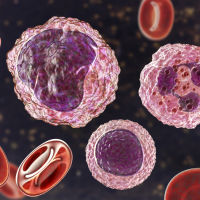The combination of intravenous vitamin C, corticosteroids and thiamine has been made famous by Dr. Paul Marik, M.D. for the treatment of sepsis in critically ill patients. The ‘Marik protocol’, also termed HAT (Hydrocortisone, Ascorbic acid, Thiamine), has however come under criticism regarding the lack of evidence.
Dr. Marik of Sentara Norfolk General Hospital, Virginia, has been using the Marik protocol to treat sepsis in his ICU. As sepsis is the cause of 250,000 deaths per year in the USA and with no drugs available for its treatment, HAT has been a popular option for ICU physicians.
The observational study conducted in 2017 and published in Chest, reported the outcomes of 47 sepsis patients before the protocol was available and 47 sepsis patients where the HAT protocol was administered. It was found that 19 of the patients before the HAT protocol had died whereas only 4 had died after the protocol was given, the deaths of which were not related to sepsis.
However, it was highlighted by Dr. Jeremy Faust, M.D. during the “The Skeptics Guide to EM” podcast that the astonishing results in Marik’s trial could be due to critically ill patients being excluded from the study where HAT was administered making it partial to selection bias.
Despite no randomised clinical trials being carried out, the before-and-after trial was praised by Marik and also by Sentara Healthcare and Eastern Virginia Medical School as a success. However, Marik was met with criticism within the medical community, dubbing the discovery as “science by press release”.
Dr. Steven Simpson, M.D. of Sepsis Alliance and the University of Kansas, said he was shocked by the popularity of this protocol and says the effects of social media allowed physicians to administer the protocol with confidence.
JAMA associate editor and chair of critical medicine at the University of Pittsburgh, Dr. Derek Angus, M.D., M.P.H., agreed that this type of protocol would not have gained traction without the role of social media. It was only after the study was run on National Public Radio (NPR) that it gained notoriety and funding was given to commence clinical trials.
There are seven clinical trials currently testing the Marik protocol, with one taking place in Slovenia, subsequently terminated due to lack of patients meeting the criteria; one completed in China, the results of which have not been released yet; one to take place in both Greece and Australia; and three due to take place in the USA.
The largest of the trials in the USA will be testing Vitamin C, Thiamine and Steroids in Sepsis (VITCAS) protocol. The investigation will be led by Jonathan Sevransky, M.D., M.H.S., of Emery University Hospital. The trial is not due to start yet with 200 of the 500 patient goal being met so far. The trial is being funded by the Marcus Foundation, based in Atlanta, USA.
Dr. Angus also expressed how he would have thought a smaller effect size of the 2017 before-and-after study would have been more plausible. This is also highlighted by Dr. H. Bryant Nguyen, M.D., who tested the Triple Therapy (TT) as it was already being used within his hospital. Similar to Marik’s before-and-after study, Nguyen conducted a study with 94 patients, half of which were given the HAT protocol and half were not. It was found that there was no significant difference between the population treated with HAT and those that had not in the primary outcome (hospital mortality) or the secondary outcomes (ICU and hospital stay duration and duration of time until patient was vasopressor independent). Dr. Nguyen and his co-authors urged for randomised trials before this is made a standard of care for the treatment of sepsis.
Although Marik has described the backlash of his sepsis protocol the ‘Semmelweis reflex’, HAT is still in use at Marik’s hospital, most likely due to it's low-cost and the safety of substances used. Marik highlights that whilst he is anxious to know the results of the trials, he pledges the safety of the protocol.
Source: JAMA
References:
Rubin R (2019) Wide Interest in a Vitamin C Drug Cocktail for Sepsis Despite Lagging Evidence. JAMA. doi:10.1001/jama.2019.7936
Latest Articles
Sepsis, Vitamin C, Paul Marik, hydrocortisone, Thiamine, Ascorbic acid, Dr. Paul Marik, Marik protocol, Sentara Norfolk General Hospital, HAT, HAT Protocol, VITCAS, Thiamine and Steroids in Sepsis, Thiamine and Steroids in Sepsis protocol, Semmelweis reflex, Semmelweis, Marik
The combination of intravenous vitamin C, corticosteroids and thiamine has been made famous by Dr. Paul Marik, M.D. for the treatment of sepsis in critically ill patients. The ‘Marik protocol’, also termed HAT (Hydrocortisone, Ascorbic acid, Thiamine), ha


























